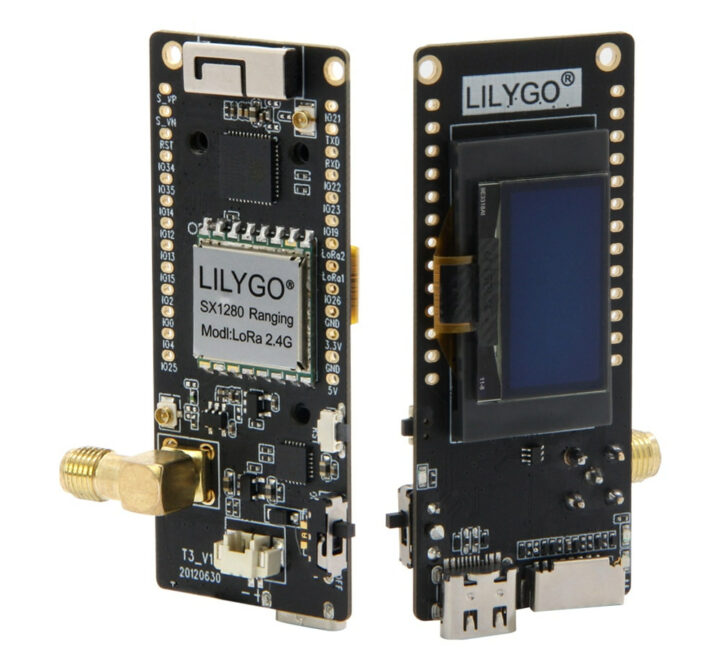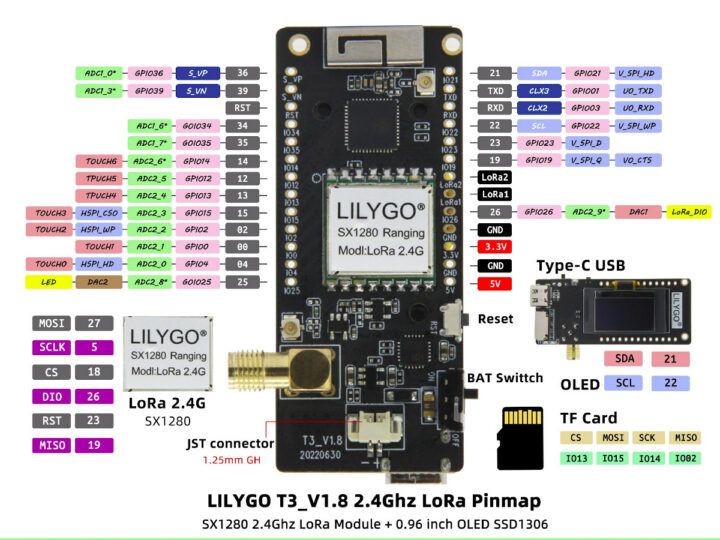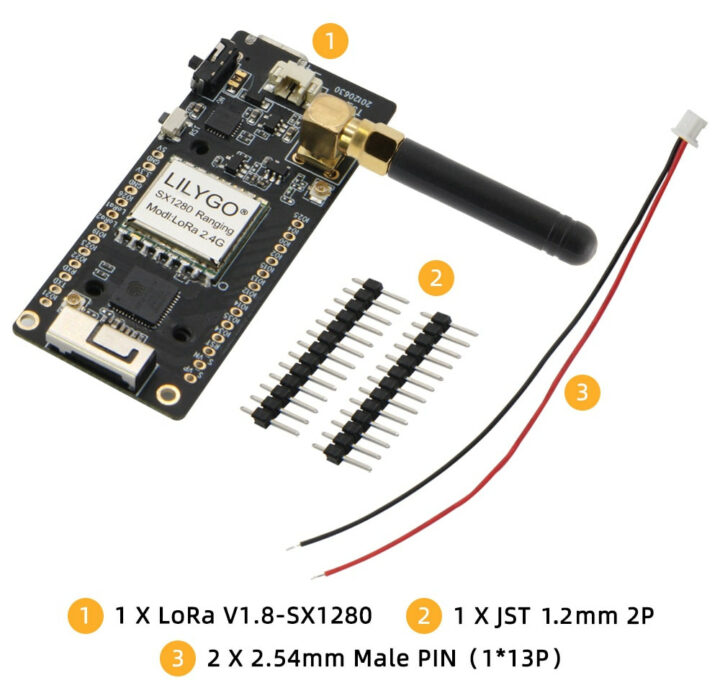We’ve seen plenty of ESP32 LoRa boards with the traditional 433 MHz, 868 MHz, or 915MHz frequencies, but I think LilyGO LoRa V1.8 (aka T3 V1.8) is the first ESP32 board that integrates a Semtech SX1280 transceiver for the 2.4GHz LoRa standard used for global coverage, notably maritime applications, and ranging.
The ESP32 & SX1280 board also offers 26 pins for expansion, a microSD card for data storage, a 2-pin connector for batteries, a 0.96-inch OLED for information display, and comes with a 3D antenna and u.FL connector for WiFi and Bluetooth, and an SMA antenna for LoRa connectivity.
LilyGO LoRa/T3 V1.8 specifications:
- SoC – Espressif ESP32 dual-core Xtensa LX6 processor with 2.4 GHz WiFi 4 and Bluetooth 4.2
- Storage – 4MB SPI flash, microSD card slot
- Display – 0.96-inch OLED display with 128×64 resolution (SSD1306 I2C driver)
- Connectivity
- 802.11 b/g/n WiFi 4 up to 150 Mbps + Bluetooth 4.2 Classic and LE with “3D antenna” soldered on PCB, u.FL connector for external antenna
- LoRa
- Based on Semtech SX1280 RF transceiver connected to ESP32 via SPI interface
- 2.4 GHz LoRa radio with SMA antenna
- Power Output – +12.5 dBm
- USB – 1x USB Type-C port for power and programming via CH9102 USB to TTL chip
- Expansion – 26-pin header (unpopulated) with GPIO, ADC, VP/VN, DAC, Touch, I2C, UART, 2x “LoRa” pins, and power signals (5V/3.3V/GND)
- Misc – Reset button, battery on/off switch
- Power Supply
- 5V via USB Type-C port
- 3.7VLiPo battery via 2-pin JST connector
- Dimensions – 6.6 x 2.5 cm; width including antenna: 7.9 cm
LilyGO provides some Arduino sketches for 2.4GHz LoRa including a ranging (ToF) demo, as well as receive and transmit samples on Github.
LilyGO LoRa V1.8 board sells for $27.18 plus shipping on Aliexpress, and ships with a 2.4GHz antenna, two headers, and a cable to connect a battery. If you don’t own a 2.4GHz LoRaWAN gateway, you’ll need two to experiment with P2P connection for ranging and/or data transmission.

Jean-Luc started CNX Software in 2010 as a part-time endeavor, before quitting his job as a software engineering manager, and starting to write daily news, and reviews full time later in 2011.
Support CNX Software! Donate via cryptocurrencies, become a Patron on Patreon, or purchase goods on Amazon or Aliexpress







